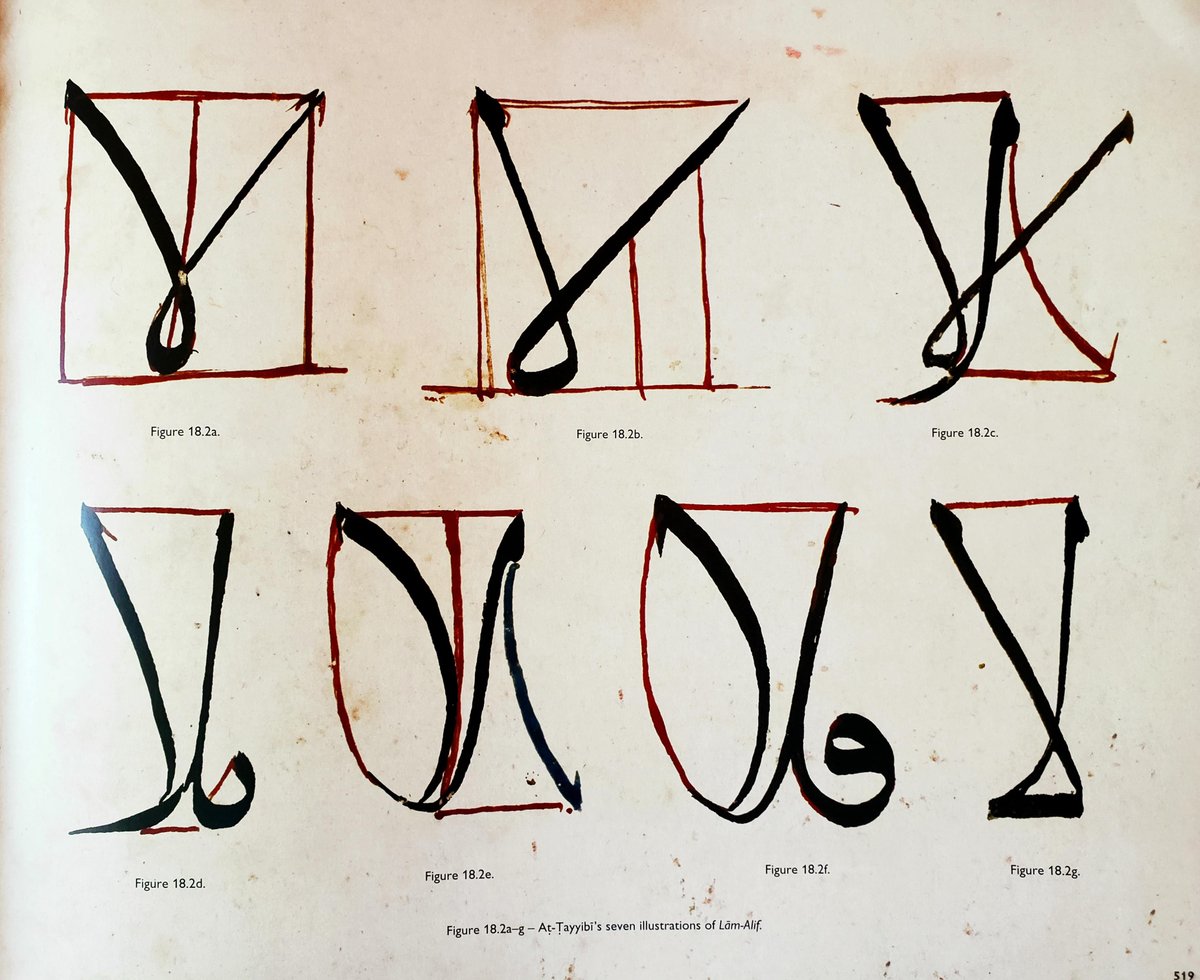Comparing things or people to Arabic letters is common in poetry. E.g. the alif-lām combination لا , which is often used as a symbol of union. Why is that the case? A quick https://abs.twimg.com/emoji/v2/... draggable="false" alt="🧵" title="Thread" aria-label="Emoji: Thread">on this element of script/calligraphy as metaphor ... 1/6
https://abs.twimg.com/emoji/v2/... draggable="false" alt="🧵" title="Thread" aria-label="Emoji: Thread">on this element of script/calligraphy as metaphor ... 1/6
... e.g. here is a nice line quoted anonymously by ʿAbd al-Qāhir al-Jurjānī, Asrār al-balāgha, ed. Ritter, p. 184:
إنّي رأيتُك في نومي تُعانقني
كما تُعانق لامُ الكاتب الألِفا
In my slumber, I saw you embrace me
like the scribe’s lām embraces the alif
2/6
إنّي رأيتُك في نومي تُعانقني
كما تُعانق لامُ الكاتب الألِفا
In my slumber, I saw you embrace me
like the scribe’s lām embraces the alif
2/6
Compare this line with the title of a book on mystical love by Abū l-Ḥasan ʿAlī ibn Muḥammad al-Daylamī, ʿAṭf al-alif al-maʾlūf ʿalā l-lām al-maʿṭūf (Attaching the United Alif to the Curved/Linked Lām) referring to an 8-line poem by al-Ḥallāj ... 3/6
... which is #6 in Sharḥ Dīwān al-Ḥallāj, ed. al-Shaybī, p 177 (meter: basīṭ):
واللَّامُ بِالأَلِفِ المَعْطوفِ مؤتَلِفٌ
كِلاهُما واحِدٌ في السَبْقِ معناء
The lām is linked to the curving alif
the two being one in priority and sense
(sabq also means "slip of the pen")
4/6
واللَّامُ بِالأَلِفِ المَعْطوفِ مؤتَلِفٌ
كِلاهُما واحِدٌ في السَبْقِ معناء
The lām is linked to the curving alif
the two being one in priority and sense
(sabq also means "slip of the pen")
4/6
The reason alif and lām are used like this? In their massive study The Cosmic Script, vol. 2, p. 516, Moustafa & Sperl note, “In their conjunction, lām and alif form a distinct graphic shape, which in some writings on calligraphy is to be counted a letter in its own right..." 5/6
...“The total # of letters is then increased to 29, with the lām-alif placed in 28th position, before yāʾ. Al-Qalqashandī, Ibn aṣ-Ṣāʾigh & most other calligraphic sources proceed this way. Aṭ-Ṭayyibī does too and provides seven illustrations of the ligature” (see picture) 6/6
Did I mess up any of the translations here? @PressTaras @AbbasComics @mollycrabapple @MENALibAHS @stephenniem @NAMansour26 @samopriya @mrustow @PhDniX @AltaytoYughur @menalib @denis_mcauley @alexjrowell @AlexanderMKey @RachelSchine

 Read on Twitter
Read on Twitter


